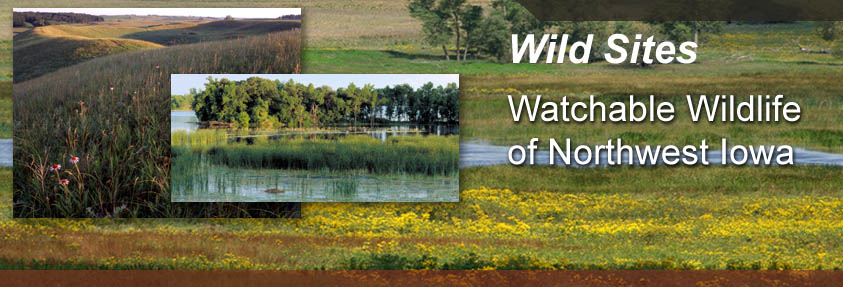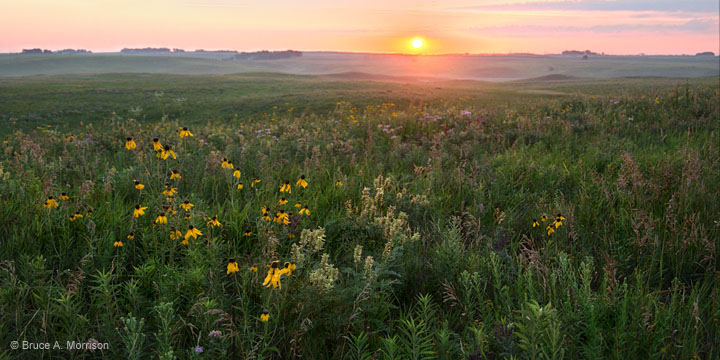 |
|||||
 |
|||||
 |
|||||
| Cayler Prairie
Roam one of Iowa’s largest native prairies. This site is a National Natural Landmark, and a state preserve. Scientists are studying prairie butterflies as well as Dickcissel nesting on this prairie complex. Flowers are abundant and especially showy in June and July. Prairie History Cayler is a unique geologic area with knob and kettle topography. The irregular rocky landscape was formed by the glaciers that were here 12,000 to 14,000 years ago. As the stagnant ice sheet melted, it created a complex of potholes and ridges. Some of the ridges are thought to be eskers, riverbeds that formed inside the melting glacier. As the water melts, it formed channels at weak points and laid down silt and rock that formed long, low hills. Location Description Plant communities on the preserve range from dry to wet prairie and marsh. Come see Pasque flower, Compass plant, Rattlesnake master, Gray-headed coneflower, and Bergamot, to name a few. The Burrowing Owl and Upland Sandpiper nest here. The Northern Harrier, Grasshopper Sparrow, Bobolink, Dickcissel, Western Meadowlark, Eastern Kingbird, Red-tailed Hawk and Sedge Wren are also found here. More than 40 species of butterflies have been recorded on the site. Driving Directions and other Information
Educational Activity: |
|||||
| Visit Cayler Prairie via Google Map by Clicking HERE!
(Please disable your browser's popup blocker before viewing map) |
|||||
|
Take a short visit to Cayler Prairie via the video below! |
|||||
| Wild Categories | Photo Gallery | ||||||||||||||||